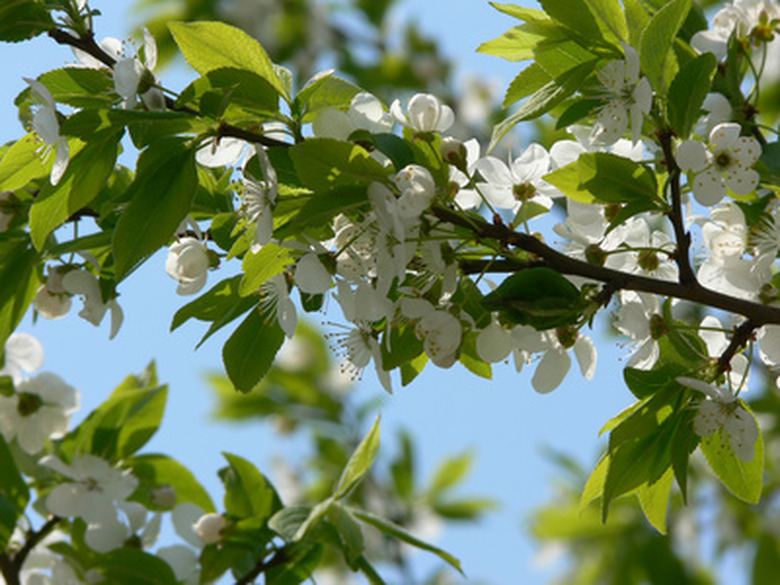Evergreen Plum Trees
Plums are cultivated throughout the world for cooking, baking, and making jellies or jams. Their small size is packed with a sweet, strong flavor. There are many varieties of evergreen and deciduous trees that produce plums. Evergreen, unlike deciduous, plum trees do not lose their foliage in the winter months. While some of these are trees, others are used as shrubs or bonsai.
History
People from China, Japan and East Asia have cultivated evergreen plums like loquat for centuries. Chinese merchants are believed to have brought these trees to the Mediterranean and Indian subcontinent, thus naturalizing them. North American plum trees are used for medicinal and food purposes.
- Plums are cultivated throughout the world for cooking, baking, and making jellies or jams.
- While some of these are trees, others are used as shrubs or bonsai.
Varieties
Many varieties of evergreen plum trees exist, with the Natal plum (Carissa macrocarpa), loquat plum (Eriobotrya japonica), Japanese plum yew and Chinese sweet plum or Chinese bird plum (Sageretia theezans) among the more commonly known ones. Belonging to different parts of Africa and northeast Asia, these trees are now naturalized throughout the Indian subcontinent, most of the Mediterranean and South America.
Features
Evergreen plum trees range in height from those that grow up to 4 feet at maturity to others that reach 30 feet tall. The foliage of each tree or shrub varies, from long deep green leaves with a velvet-like texture of the loquat plum to smaller, brightly green leaves of the Natal plum. The Chinese sweet plum commonly used for bonsai features medium green, shiny oval leaves that start out red when the plant is young. It produces white flowers that develop into miniature blue berry-like plums.
Evergreen plums are used as ornamental plantings in a garden because of their thick foliage and fragrant white, lavender or light pink scented blossoms that develop into fruit. These trees stand out and brighten the landscape when deciduous trees lose their foliage, and attract birds and butterflies due to the edible fruit.
- Many varieties of evergreen plum trees exist, with the Natal plum (Carissa macrocarpa), loquat plum (Eriobotrya japonica), Japanese plum yew and Chinese sweet plum or Chinese bird plum (Sageretia theezans) among the more commonly known ones.
- These trees stand out and brighten the landscape when deciduous trees lose their foliage, and attract birds and butterflies due to the edible fruit.
Plums
The fruit evergreen plum trees and shrubs produce differ from the typical ones found commercially. Unlike standard plums, evergreens produce smaller-sized fruit in yellow, blue or red. The loquat plum produces oblong yellow fruit, while the plums on Japanese yew resemble cherries in shape and size.
Most evergreen plums profusely flower from spring through early summer, enhancing the landscape with colorful scented blossoms before producing fruit by late summer or autumn.
Considerations
Evergreen plums prefer full sunlight and well-drained, evenly moist soils. Although some light is necessary for the bonsai Chinese sweet plum, plenty of direct sunlight causes leaf burn. Evergreen plum trees are slow growers and require a lot of patience on part of the gardener. Although Natal and loquat grow slightly faster, the Japanese plum yew grows 4 feet tall in approximately 10 years.
- The fruit evergreen plum trees and shrubs produce differ from the typical ones found commercially.
- Unlike standard plums, evergreens produce smaller-sized fruit in yellow, blue or red.
